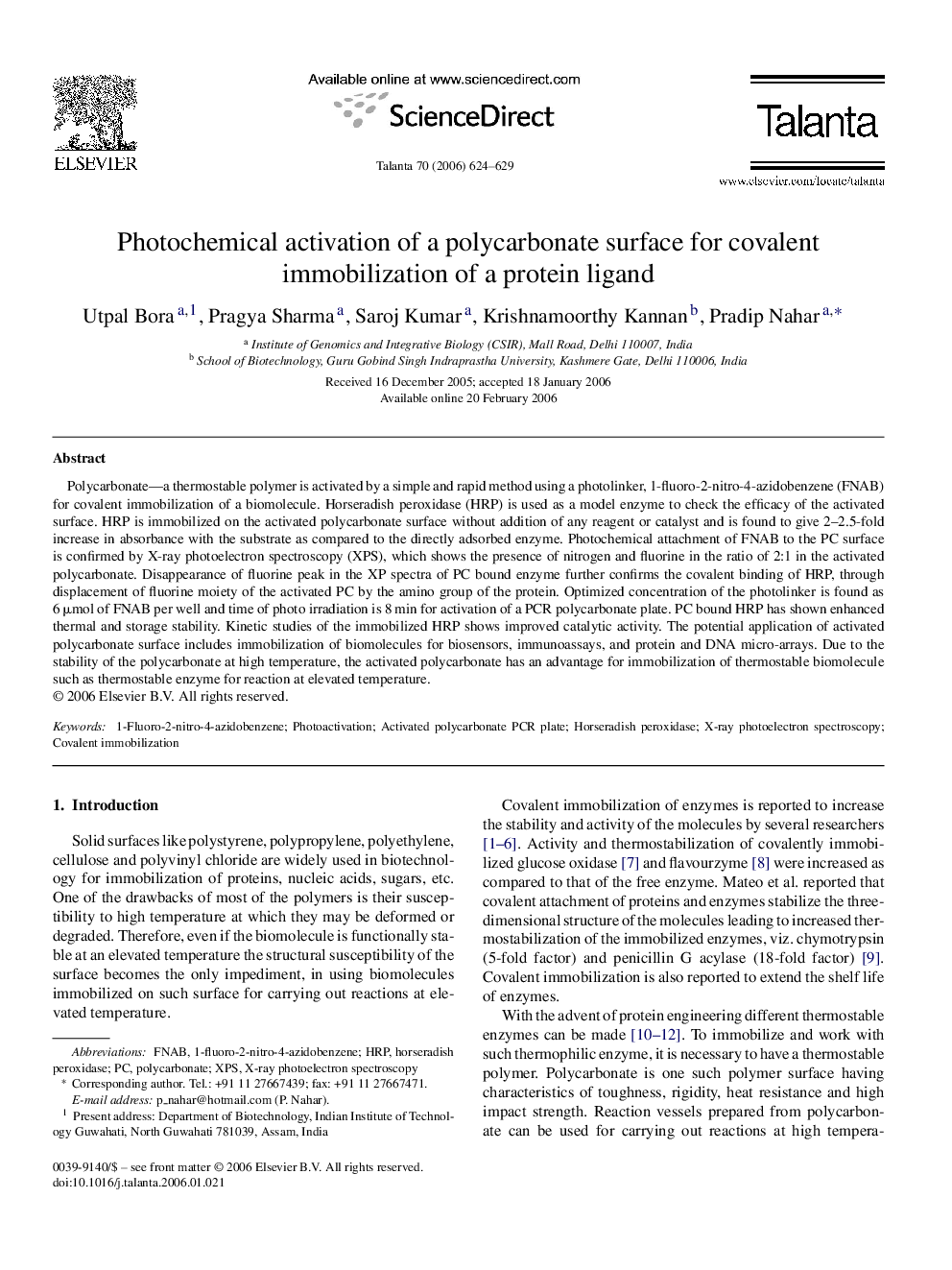| Article ID | Journal | Published Year | Pages | File Type |
|---|---|---|---|---|
| 1245499 | Talanta | 2006 | 6 Pages |
Polycarbonate—a thermostable polymer is activated by a simple and rapid method using a photolinker, 1-fluoro-2-nitro-4-azidobenzene (FNAB) for covalent immobilization of a biomolecule. Horseradish peroxidase (HRP) is used as a model enzyme to check the efficacy of the activated surface. HRP is immobilized on the activated polycarbonate surface without addition of any reagent or catalyst and is found to give 2–2.5-fold increase in absorbance with the substrate as compared to the directly adsorbed enzyme. Photochemical attachment of FNAB to the PC surface is confirmed by X-ray photoelectron spectroscopy (XPS), which shows the presence of nitrogen and fluorine in the ratio of 2:1 in the activated polycarbonate. Disappearance of fluorine peak in the XP spectra of PC bound enzyme further confirms the covalent binding of HRP, through displacement of fluorine moiety of the activated PC by the amino group of the protein. Optimized concentration of the photolinker is found as 6 μmol of FNAB per well and time of photo irradiation is 8 min for activation of a PCR polycarbonate plate. PC bound HRP has shown enhanced thermal and storage stability. Kinetic studies of the immobilized HRP shows improved catalytic activity. The potential application of activated polycarbonate surface includes immobilization of biomolecules for biosensors, immunoassays, and protein and DNA micro-arrays. Due to the stability of the polycarbonate at high temperature, the activated polycarbonate has an advantage for immobilization of thermostable biomolecule such as thermostable enzyme for reaction at elevated temperature.
